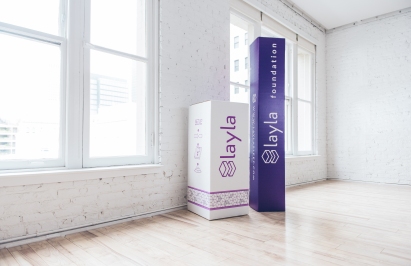You heard me right, hanging upside down is good for you. It’s called Inversion Therapy and it can be very therapeutic. One of the benefits is spinal decompression or stretching of the spine. Read more to discover the benefits of hanging upside down.

Disclaimer: This article is strictly for informational purposes only and is not intended to be medical advice.
Table of Contents
Why Inversion Therapy?
Why would you want to hang upside down? The answer, in a nutshell, is to counteract the negative effects of gravity. That’s why it’s also referred to as gravity inversion. Inversion Therapy (IT) decompresses the spine, and is a form of spinal traction. One of the main benefits of IT is to open up and elongate the discs, relieving pressure on the nerves. Decompressing the nerve root can take a person’s pain level down a few notches, which makes this therapy worth considering for those suffering from chronic pain. Other positive effects include:
- Improved circulation
- Better mental alertness
- Spinal realignment
- Increased flexibility
- Stress reduction
- Pain reduction
- Better posture
Affiliate Links ✔️
Benefits Of Hanging Upside Down
1. Chronic Back Pain
Inversion therapy can be particularly helpful for those with back pain as it decompresses the spine. With time, age, and the effects of gravity, the discs in the spine become compressed, causing pain and discomfort. This inexpensive therapy, that you can do in the comfort of your own home, is worth considering if your back pain has become chronic. It’s particularly useful for lower back pain, a common condition many people experience.
Those with spinal stenosis may find inverting helpful as it opens up the space between the vertebrae, giving the nerves and discs more space, providing much-needed relief. This reduction in pressure allows herniated discs to retract, further reducing pressure on the nerves. Nutrients, can then better reach the discs to promote healing. Although a temporary effect, if done consistently, IT may reduce pain enough to make it worth doing.
2. Organ Prolapse
This one’s for all you ladies out there. Pelvic organ prolapse occurs when the muscles and ligaments in the pelvic floor no longer provide support to the bladder, uterus, small intestine, rectum or urethra. Prolapse is caused by multiple pregnancies, surgery, or difficult labors.
It can also be caused by the estrogen deficiency associated with menopause. Smoking, chronic constipation, or heavy lifting are also implicated as is good old-fashioned aging, and the effects of standing upright over time.
Prolapse causes chronic low back pain, painful urination and leakage, and pelvic pressure and discomfort. Inversion therapy can counteract prolapse by pulling the abdominal organs back into their natural position, providing relief from the uncomfortable symptoms prolapse produces.
3. Sciatica
Sciatica is nerve pain that is caused by irritation to the roots of the lower lumbar and lumbosacral spine. It originates in the lower back, and continues down the legs. This painful condition is caused by spinal stenosis, herniated discs, spondylolisthesis, piriformis syndrome or pregnancy.
The piriformis muscle, located in the buttocks area, can irritate the sciatic nerve, causing numbness and tingling. Spondylolisthesis is a condition where vertebra can slip and cause overlapping of the discs to occur. The shooting pain associated with sciatica, can range from severe and debilitating, to occasional irritation.
Pain can worsen with prolonged sitting. Those with sciatica may find relief by using inversion therapy for the same reasons listed above. The gravitational pressure that is taken off the nerve roots and spinal discs may provide temporary relief from the excruciating nerve pain associated with sciatica.
Spinal traction, or stretching of the spine, increases the space between vertebrae, possibly, decreasing discomfort, and allowing the compressed discs to recover the moisture that is lost due to compression. This increased circulation alleviates pain, and promotes healing. Fortunately, most cases of sciatica resolve over a few days or weeks without treatment.
Who Shouldn’t Do Inversion Therapy
There are certain people that shouldn’t engage in inversion therapy: people with heart disease, hypertension, glaucoma, or pregnant women should not hang upside down. Inversion causes blood to rush to the head, increasing pressure in the eye, and, possibly, increasing blood pressure, as well.
Talk with your doctor if you have osteoporosis or have had a knee or hip replacement as hanging stretches the connective tissue around these areas, which may be problematic. I invert somewhere between 90 and 120 degrees. Hanging at a 180 degree angle is very uncomfortable, and not necessary to obtain the benefits inverting has to offer. Begin by inverting gradually, for instance, at a 20-30 degree angle.
Be safe, and don’t hang more than 10 minutes. Start with just one to two minutes of inversion when beginning this therapy, and take note of how you feel. Gradually increase the duration and angle as you feel more comfortable. If you feel pain at any time, stop immediately.
As with all natural therapies, inversion therapy is controversial. While a rise in blood pressure is dangerous for those with hypertension, stretching tight muscles can be relaxing, resulting in a reduction in blood pressure. In fact, some holistically-minded practitioners use this treatment to reduce high blood pressure. Educate yourself before participating in IT.
[Read More: Tips To Relieve Tight Fascia]
Inversion Therapy Equipment
Before purchasing your own inversion table, schedule a few IT sessions with a physical therapist to see how your body responds to hanging. If you like it, and can feel a difference, consider buying your own. There are many options available. Read the reviews to get a feel for how any particular model performs.
Features to look for in an inversion table include;
1. Sturdiness – you want your table to last so don’t skimp on durability. Make sure the table is made of high-quality material and will last.
2. Comfort – since people hang due to discomfort, the last thing you want is an uncomfortable inversion experience. Hang on the table for a few minutes before buying. Can you invert to a 90 degree angle comfortably? Are the movements smooth or jerky?
3. Guarantee – what is the guarantee and warranty on the product? There’s nothing worse than unpacking a product, and using it a few times, and just not liking it. Make sure the company has a good return policy, and warranty, in case something on your table breaks.
4. Additional Features – many inversion tables come with add-ons, such as, lumbar pillows or covers.
Inversion Tables
Check out these three inversion tables:
IRONMAN 4000 Infrared Therapy Inversion Table
Key Points
I enjoy my daily inversion therapy. It’s an amazing decompression tool. I spend many days sitting at my desk, and I can feel the compression in my spine, especially my lower back.
Hanging upside down for a few minutes relieves uncomfortable pressure and is mentally rejuvenating. Give IT a try – it may be the perfect solution to what’s ailing you.
Start slowly, gradually increasing your hanging time and angle, until you come up with the perfect combination for you!
Do you hang upside down? What benefits have you noticed? Let me know in the comments:)




The title of your article caught my eye and I just had to read it. I was navigating through your website when I saw it and here I am. It was a super interesting take on the benefits of hanging upside down. I had no idea, really. There is a solid basis for doing so.
Like many others, I have had back injuries in the past, and there are times when I have had excruciating pain for extended periods of time. Generally, I will take pain medication, eat foods and supplements that help, or see a chiropractor to seek relief. It appears that this therapy of hanging upside down should be added as well.
I will definitely give Inversion Therapy a try after checking with my doctor to make sure that it will not cause any untoward side effects for me. I know that each person is different, so it may very well be that only when I try it will I know if it works. How long have you been using this therapy if I might ask?
Hi Dave,.
I’m glad you found my article but sorry to hear you’ve had back injuries in the past. I’ve been doing Inversion Therapy for years. I bought a table several years ago and it’s something I enjoy doing. It only takes ten minutes a day, or even a few times a week, to get the benefits.
There are so many advantages of hanging upside down. I’m mainly doing it to keep my height as I age, and to prevent organ prolapse, but I also find that it keeps me limber. If I ever happen to wrench my back, it accelerates my recovery.
Give Inversion Therapy a try. It can help nerve pain my increasing the space between discs, even if that space is just a tiny amount. It’s worth doing in my opinion. Thanks so much for reading!